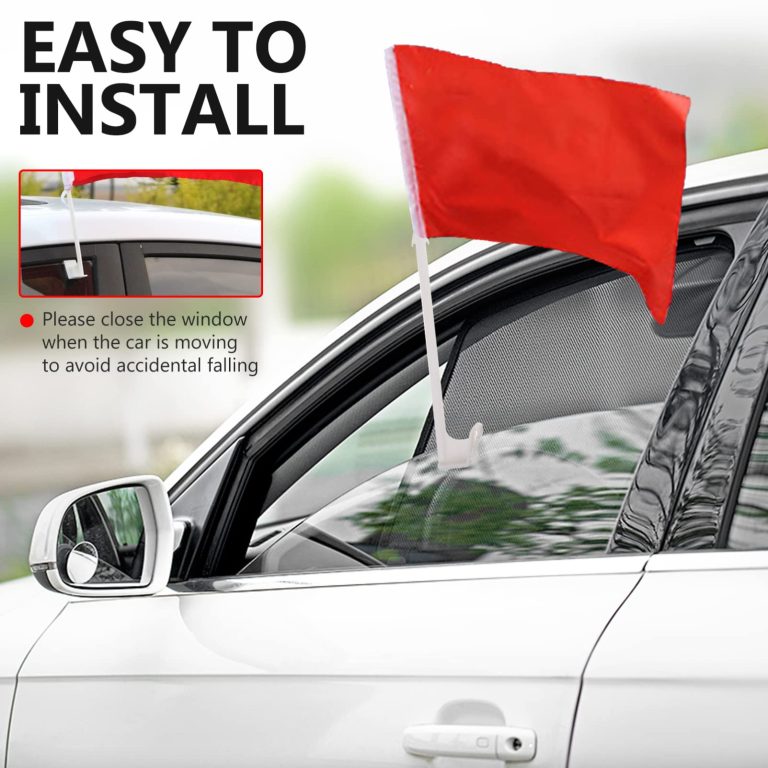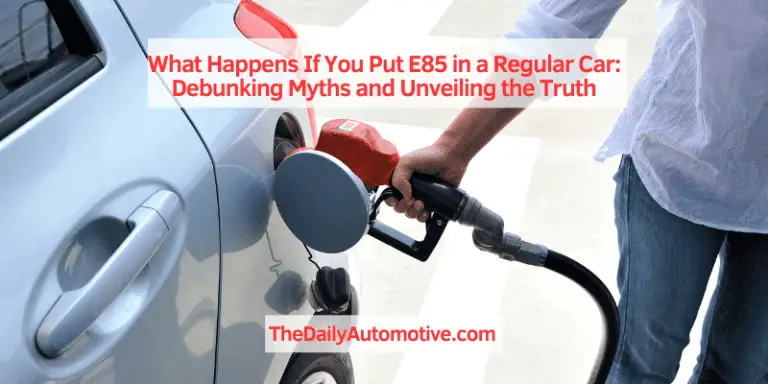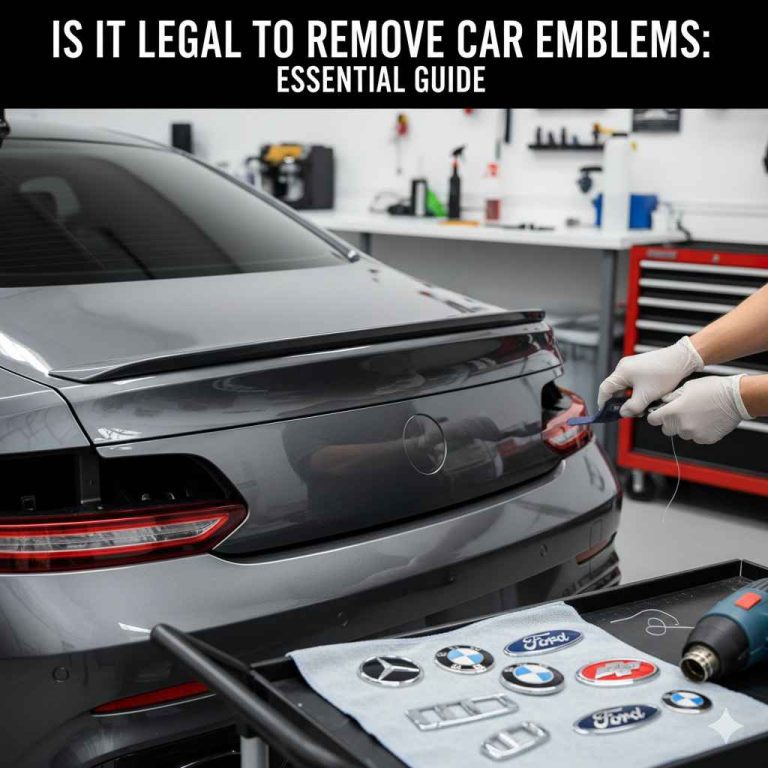How to Get Out of a Cosigned Car Loan: Smart Escape Tips
To get out of a cosigned car loan, request the primary borrower to refinance the loan solely in their name. Alternatively, consider negotiating with the lender for a release from the cosigner obligation.
Cosigning a car loan can feel like a helpful gesture, but it often leads to financial stress. You may find yourself responsible for payments if the primary borrower defaults. Understanding how to exit this obligation is crucial for your financial health.
Options include refinancing or negotiating with the lender. Being proactive can help protect your credit score and financial future. This guide explores effective strategies to help you navigate this situation and regain control of your finances, ensuring you make informed decisions moving forward.
Introduction To Cosigned Car Loans
A cosigned car loan is a loan where two people are responsible. One is the primary borrower, and the other is the cosigner. The cosigner helps the borrower qualify for the loan. This person agrees to pay if the borrower cannot. Trust and financial responsibility play a big role in this agreement.
Many reasons exist for cosigning a loan. Family members often cosign for each other. Friends may help each other out during tough times. A cosigner can also assist someone who has a low credit score. This support can lead to better loan terms and lower interest rates.
Potential Risks Of Cosigning
Cosigning a car loan carries significant risks. One major risk is the impact on your credit score. Late payments from the primary borrower can hurt your credit rating. This can make it harder to get loans in the future.
Another concern is debt responsibility. As a cosigner, you are responsible for the loan. If the borrower defaults, you must pay the remaining balance. This can lead to financial strain and stress.
Always consider these risks before agreeing to cosign. Ensure the primary borrower is reliable and able to make payments.
Assessing Your Situation
Start by reviewing the loan terms. Understand the interest rate and payment schedule. Know the total amount owed. This helps in planning your next steps.
Next, evaluate financial impacts on both parties. Check how payments affect your credit score. Missing payments can lead to serious consequences. Discuss options with the cosigner. Communication can ease tensions.
| Aspect | Impact |
|---|---|
| Loan Terms | Interest rate and total balance |
| Credit Score | Effects of missed payments |
| Communication | Options for repayment |
Communication With The Primary Borrower
Start the conversation with the primary borrower calmly. Explain your situation and feelings. Be honest about your need to get out of the cosigned loan. This helps build trust and understanding.
Discuss possible options for a repayment plan. Suggest that the primary borrower takes over the loan fully. Offer to help find solutions that work for both of you. Consider setting a timeline for payments.
Make sure to document all agreements in writing. This helps avoid confusion later. Regular check-ins can keep the lines of communication open. Both parties should feel comfortable sharing concerns.
Refinancing The Car Loan
Refinancing a car loan can help ease financial burdens. Start by exploring different lenders. Some banks and credit unions offer competitive rates. Check online options too, as they may have lower fees.
Gather necessary documents for the application. These often include your credit report, proof of income, and vehicle information. Good credit scores increase chances of qualifying for better rates.
Look for special refinancing deals. Some lenders provide incentives for cosigned loans. Always read the fine print to avoid hidden fees.
Once approved, your cosigner can be released from the loan. This helps improve both parties’ credit scores. Make sure to maintain timely payments to keep the loan in good standing.
Finding A New Cosigner
Finding a new cosigner can be a great way to get out of a cosigned car loan. A reliable replacement helps ease the financial burden. Start by talking to family or friends who have good credit. They might be willing to help you.
Make sure your new cosigner understands the responsibilities involved. They must be able to make payments if needed. This is an important commitment that should not be taken lightly.
Once you find a suitable replacement, contact your lender. They will guide you through the process of transferring cosigner responsibilities. This step is crucial to ensure everyone is protected.
Ensure the new cosigner has all the necessary documents ready. This includes proof of income and credit history.
Selling The Vehicle
To sell the vehicle, first determine its value. Use online tools to find a fair price. Check websites like Kelley Blue Book or Edmunds. These sites help you see current market trends.
Once you know the value, decide on a selling strategy. You can sell it privately or trade it in. Private sales often yield more money. But they require more effort.
Next, prepare the car for sale. Clean it thoroughly inside and out. Take clear, appealing photos for your listings. Provide detailed information about the car’s condition.
Finally, be transparent with potential buyers. Disclose any issues with the vehicle. This builds trust and helps the sale process go smoothly.
Legal Remedies And Advice
Consulting with a legal expert can be very helpful. A lawyer understands your rights in a cosigned car loan. They can provide guidance on what steps to take.
Understanding your rights is crucial. You might be responsible for payments if the primary borrower defaults. State laws can affect your obligations. Knowing these laws is essential for your situation.
Always keep records of communications. Documentation can support your case if disputes arise. A legal expert can assist you with negotiating the loan terms or finding a way to exit the agreement.
Preventing Future Risks
Setting clear boundaries can help everyone involved. Define who is responsible for payments. Discuss what happens if someone misses a payment. Open communication is essential to avoid misunderstandings.
Alternatives to cosigning exist. Consider a joint loan instead. This option includes both parties but offers more control. Secured loans may also work. They require collateral, reducing risk for lenders.
Some may explore credit-builder loans. These can help improve credit scores without cosigning. Another option is finding a co-borrower with a strong credit history. This person can share loan responsibilities.
Frequently Asked Questions
How Can I Remove Myself From A Cosigned Loan?
To remove yourself from a cosigned loan, you can ask the primary borrower to refinance the loan in their name. This process will eliminate your responsibility. Alternatively, you can negotiate with the lender to release you from the agreement, but this is less common.
What Happens If The Primary Borrower Defaults?
If the primary borrower defaults, you are still liable for the loan. This means the lender can pursue you for payment. Your credit score may also suffer due to missed payments. It’s crucial to communicate with the borrower to ensure timely payments.
Can I Sell The Car To Get Out Of The Loan?
Yes, selling the car is an option to exit the loan. However, you must ensure the sale covers the remaining loan balance. If not, you will still be responsible for the unpaid amount. Always consult with your lender before selling the vehicle.
Will Refinancing Help Me Exit A Cosigned Loan?
Refinancing can help you exit a cosigned loan. The primary borrower can apply for a new loan solely in their name. This process will pay off the original loan and release you from obligations. Make sure the borrower qualifies for refinancing before proceeding.
Conclusion
Getting out of a cosigned car loan can be challenging but not impossible. Always communicate with the lender and explore options. Refinancing or transferring the loan may provide relief. Remember, understanding your responsibilities is key. Take proactive steps to secure your financial future while minimizing stress.
Your journey towards financial independence starts now.







